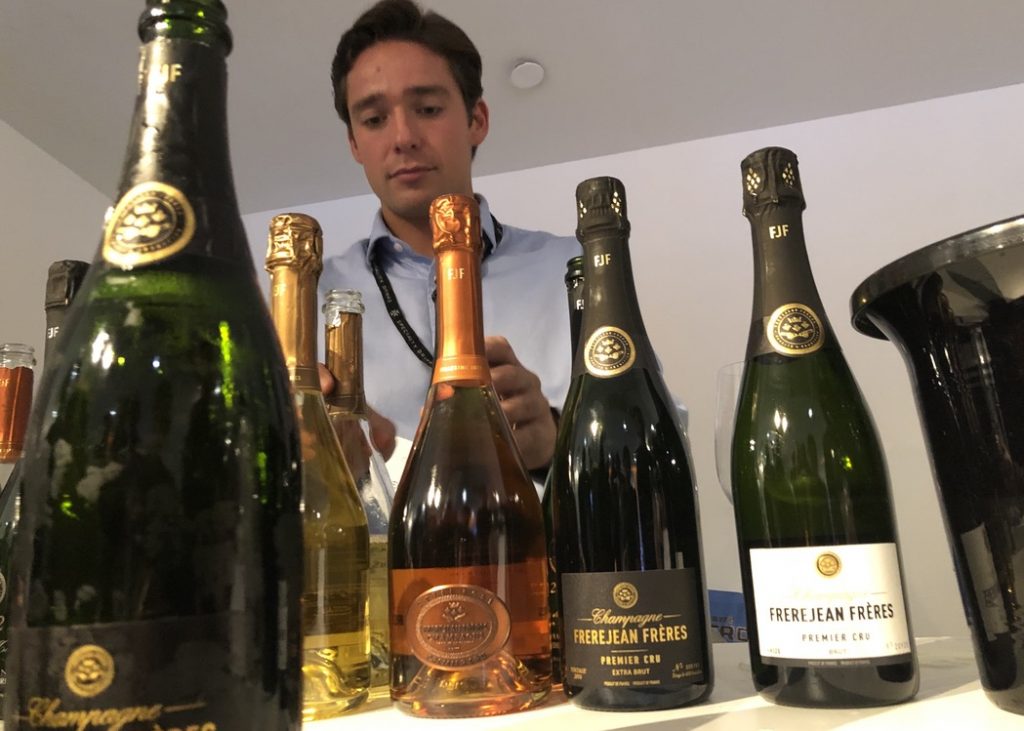THE VENUE
The Champagne Show hosted its inaugural trade and public tasting at OXO2 in London, complete with panoramic views across the River Thames.
CHAMPAGNE PRODUCTION
Champagne means three grape varieties: Chardonnay, Pinot Noir and Pinot Meunier. Chardonnay is a white grape; the two Pinots are both black. Each brings something special to a blend. Chardonnay suggests flowers, vanilla, honey; Pinot Noir is earthier, more structured; Pinot Meunier adds fresh, apple notes.
Champagne is the name of a place in northern France. It’s a range of low chalk hills which drain the chalk and lift the vines towards the sun, allowing them to achieve the barest minimum of ripeness. Turn those grapes into wine, and their high-acid profile is perfect base material with which to make great sparkling wine.
Champagne is made by a unique method, now imitated wherever winegrowers want to make great sparkling wine. The Champagne method begins with still wine made from Chardonnay, Pinot Noir and Pinot Meunier grown within the Champagne area. That wine is then bottled with a little extra sugar and yeast, and laid on its side in the cool, deep cellars.
Slowly, the yeast ferments the sugar, producing alcohol and carbon dioxide. Since the bottle is sealed, the CO2 has nowhere to go. Bubbles form. The fermentation leaves yeasty sediment in the bottle. After at least 12 months (and usually much longer than that), the wine is upended so that the sediment settles in the bottle’s neck. It is then removed by freezing the neck, allowing the gas to expel the frozen plug of sediment, and quickly re-corking the bottle, adding extra syrup at the same time to balance the naturally high-acid profile. The yeasty sediment, too, has left rich, sometimes creamy flavours in the wine.
There are a number of different Champagne styles. The most widely seen is non-vintage Brut: a blend of different years, bottled with up to 15g of residual sugar, which encapsulates each house’s style. These wines are usually given a branded name, such as Moët’s Brut Imperial, Bollinger’s Special Cuvée or Roederer’s Brut Premier.
SINGLE VINTAGE
To maintain a house style, Champagnes are often the product of more than one vintage. A single vintage reflects the characteristics of a single outstanding vintage.







